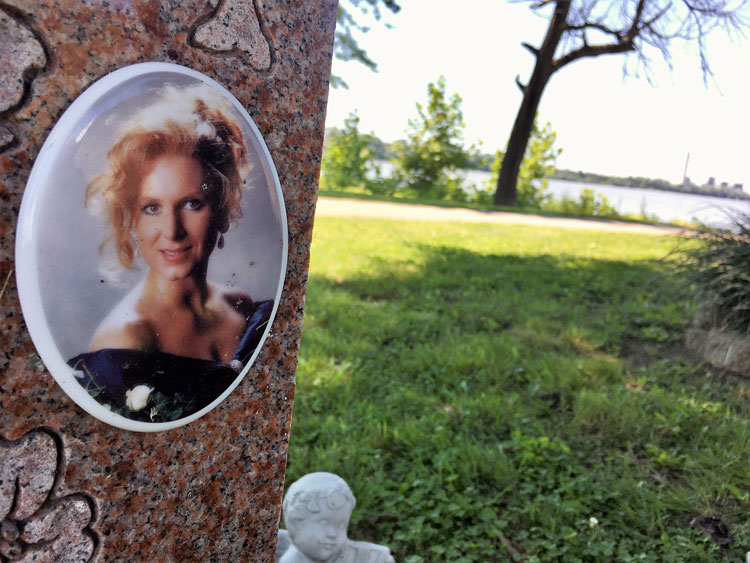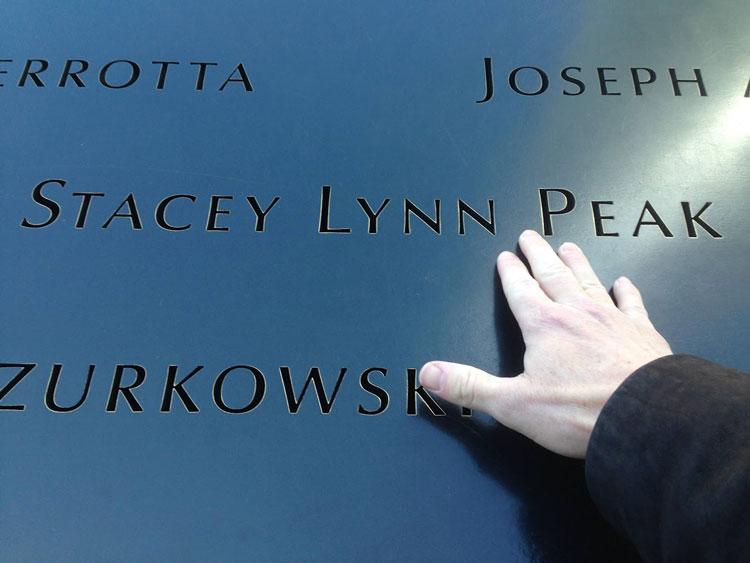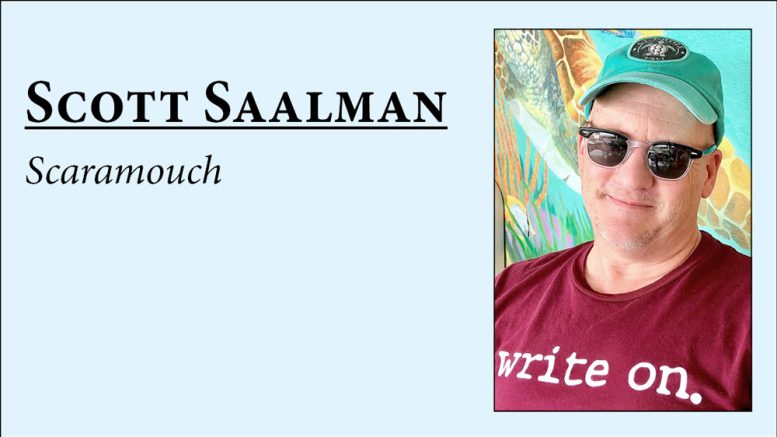In 2022, Brynne and I visited the sacred grounds of the 9/11 Memorial and Museum. Inside, I saw a portrait of my high school classmate’s (Stacey) face. I choked up. It still seemed so surreal, so fresh. We took plenty of Kleenex. What follows is an account of my first visit to the memorial a few years earlier.
A business-related trip in 2017 took me to the Big Apple for the first time in my life, so I tagged on a weekend to achieve a few personal goals, the utmost being to visit the memorial erected in honor of the victims of 19 terrorists, those nearly 3,000 people whose sad fates we witnessed via live TV and computer on Sept. 11, 2001.
My sobbing surprised me down near the toe tip of Manhattan. After all, at that time, 16 years had passed since it all came crumbling down on this sacred, somber spot forever known as Ground Zero. Sure, I expected to be emotionally moved in some way during my visit, but not moved to tears, not after so much time having passed.
Sept. 11, 2001:
Flight 11 cut into the north face of the North Tower. My god, how could a pilot mess up so badly, I remember thinking. A second airliner, Flight 175, sliced through the south face of the South Tower. My mind switched blame from pilot error to air traffic control error. Computer glitch obviously. I remained in a TV trance.
I no longer remember when terrorism was first theorized. Hijackings seemed to be happening all over the place that morning, a hornet’s nest shake at humanity. I remember being glued to CNN. More unthinkable news. Flight 77 penetrated The Pentagon. Flight 93 crashed into a field in Pennsylvania. Gravity at its cruelest during the bluest of blue skies.
The Twin Towers rumbled and tumbled, first the South Tower, second the North Tower. (In 1974, as a 10-year-old, I watched awestruck as the evening news showed a mysterious Frenchman magically using a high-wire to cross the void between the strong Twin Towers, my first recollection of them on the New York skyline.) A simultaneous release of souls occurred as the storied steel castles, proud symbols of our country’s financial might, vaporized before our very eyes.
The hellish plumes up high. The billow below that turned the day to night, devouring the streets and avenues, as if we were witnessing the getaway of pure evil.
Ash and paper. Paper and ash. Public radio’s Robert Siegel so eloquently reported this later about the pieces of paper that somehow remained intact, the litter from what once was: “Paper, after all, is the great product of Manhattan: securities analyses, stock certificates, depositions, federal filings, licenses. It is the stuff that enters the workplace unfinished and exits filled with the marks of commerce, finance and government, signed, sworn or notarized. The papers underfoot, I found, documented what a nexus the World Trade Center had been, linking people all over the world through commerce.”
I no longer remember how long it took for the national news about 9/11 to splinter into local news for the many of us across the country and throughout the globe who read the local names of people lost that day, the subsequent obituaries about our very own.

Stacey Peak’s memorial located near the Ohio River in Tell City, Ind. (Photo provided by Scott Saalman)
Stacey Peak graduated with me from Tell City High School in 1983. She grew up to become an energy power stockbroker for Cantor Fitzgerald on the 105th floor of the North Tower, several floors above where the first hijacked plane hit its mark.
The news went like this: Stacey called her mother. She said there was a fire in her building. She sounded composed, despite chaos in the background. She said her coworkers were considering going to the roof. She told her mother she loved her. Then the phone connection between a mother in Tell City, Indiana, and her daughter in Lower Manhattan died.
I walked from Midtown South, mostly via Sixth Avenue, to the National 9/11 Memorial just to find my high-school friend in the form of a name on a bronze panel.
My eyes likely scanned 2,900 other names before finding STACEY LYNN PEAK. Even though almost 16 Septembers would pass before my fingertips would trace her name inscribed in bronze, the blue sky reflecting off its sheen, I was immediately overwhelmed at the moment of our reunion, as if her death was only a day old. I told her hello. Feeling out of sorts, I needed to escape the strangers amassed at the memorial, all those hands tracing all those names, people representing so many nationalities who surrounded me. They were likely on similar missions to mine, some being way more personal in scope. I was merely a Hoosier boy who did nothing more than joke and laugh a few times with a smart, pretty, redheaded girl, who called me “Saalmy” in a high school hallway a long time ago.

Photo provided by Scott Saalman
I was tight in the throat. I moved through the crowd in search of private space (impossible) and composure (impossible). I passed a 20-something woman telling three children, “… one theory is terrorists aboard planes …”
Theory?!!!
I escaped into the Westfield World Trade Center shopping mall. I knelt behind an advertisement. I cried. Colorful, slick shopping bags in tight grips hurried by. I didn’t remember our jokes, but I remembered her laughter. I remembered that about Stacey. And for that, I crumbled.
Email Scott at scottsaalman@gmail.com.

